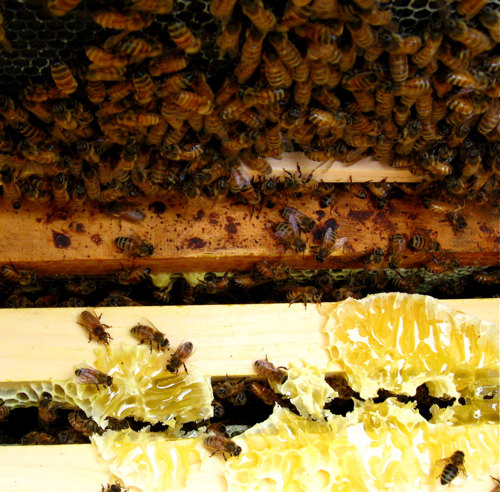 After having all of our beehives die this past winter, it's so nice to finally have a warm spring day and look in to see bees industriously tending brood and filling up empty comb. Our Italian bees are filling up hives like crazy, but the Russians and Carniolans are at a slow and steady pace.
After having all of our beehives die this past winter, it's so nice to finally have a warm spring day and look in to see bees industriously tending brood and filling up empty comb. Our Italian bees are filling up hives like crazy, but the Russians and Carniolans are at a slow and steady pace.
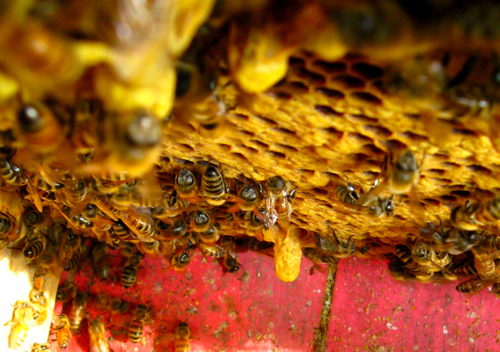 Russians are known for smaller hives and to always have queen cells on hand to replace a failing queen if need be. Even though this Russian hive had plenty of space, she had queen cells ready to go. I doubt she'll swarm, but if she does, we have an empty hive near by that they are welcome to move into. It was just Non Birding Bill and I out at the hives this time and we noted that the Russians make more noise than our other hives, but didn't bonk us to warn us they were about to sting.
Russians are known for smaller hives and to always have queen cells on hand to replace a failing queen if need be. Even though this Russian hive had plenty of space, she had queen cells ready to go. I doubt she'll swarm, but if she does, we have an empty hive near by that they are welcome to move into. It was just Non Birding Bill and I out at the hives this time and we noted that the Russians make more noise than our other hives, but didn't bonk us to warn us they were about to sting.
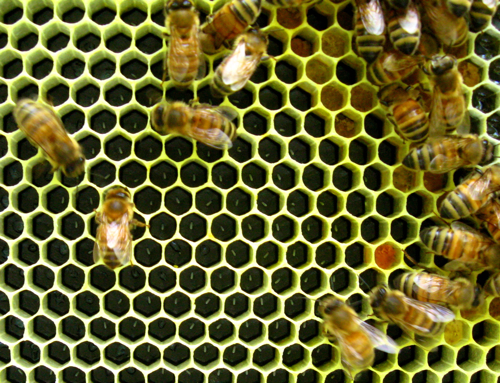
One of my favorite things to watch for in the spring--fresh comb and lots of queen eggs. Even though we didn't see the queen in this particular hive, we knew she was there and busy with all of these fresh eggs. The yellow stuff in the bottom of the comb in the upper right corner is pollen workers have been bringing in.
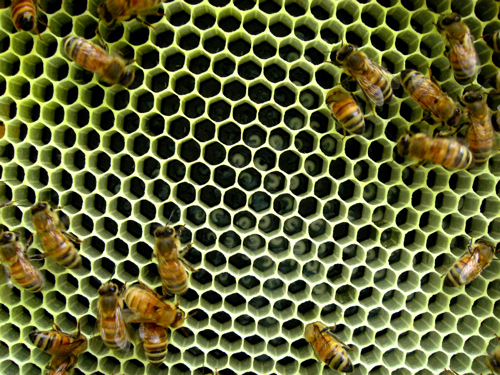
Here's a bunch of healthy, gooey larvae--soon to be new bees.
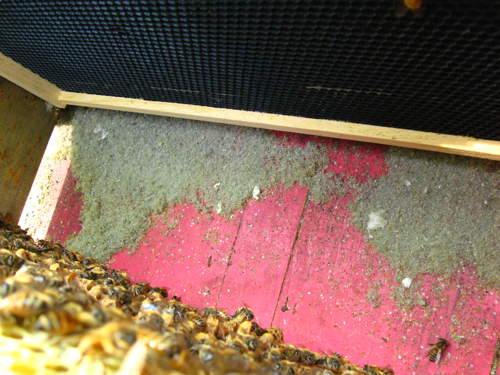
We combined a couple of new hives in mid May using the newspaper method. That worked well, you could see all the chewed bits of the newspaper in the bottom of the hive. There were some queen cells and lots of drone cells but given the Russian tendency to rear queens I don't think it's a sign of a problem.
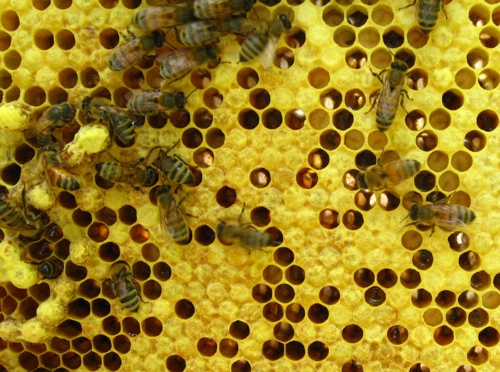
The hive had some good freshly capped brood and larvae in the empty holes. This is a little more spotty than I'd like, but considering this is in a combined hive and the new and old workers had to work out some differences, I think this is a good sign.
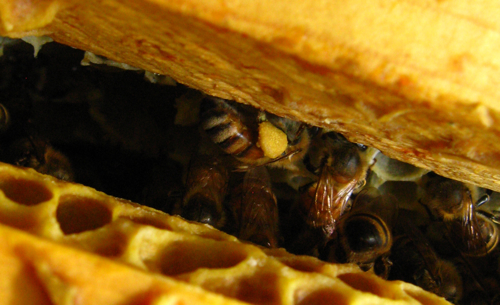
At the end of the day, it's fun to go out and watch 6 healthy hives and see bees return laden with pollen and nectar, despite our chilly and rainy spring.
